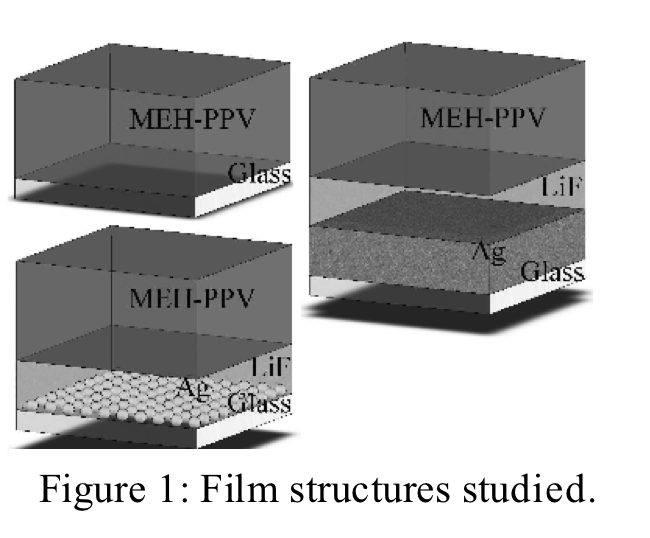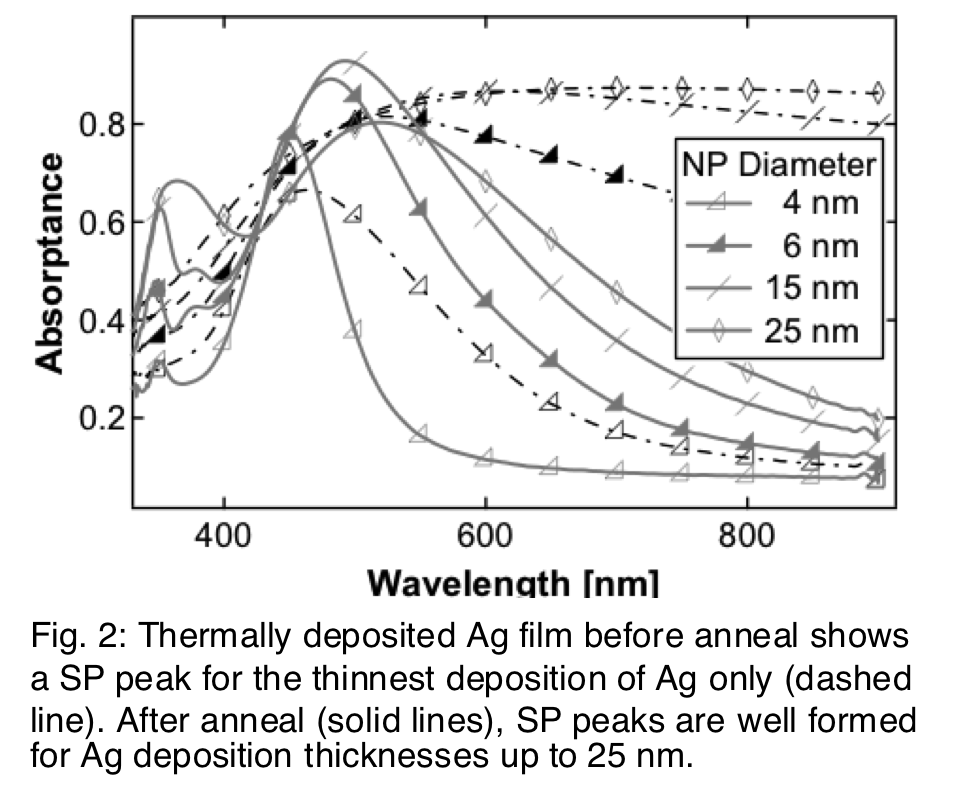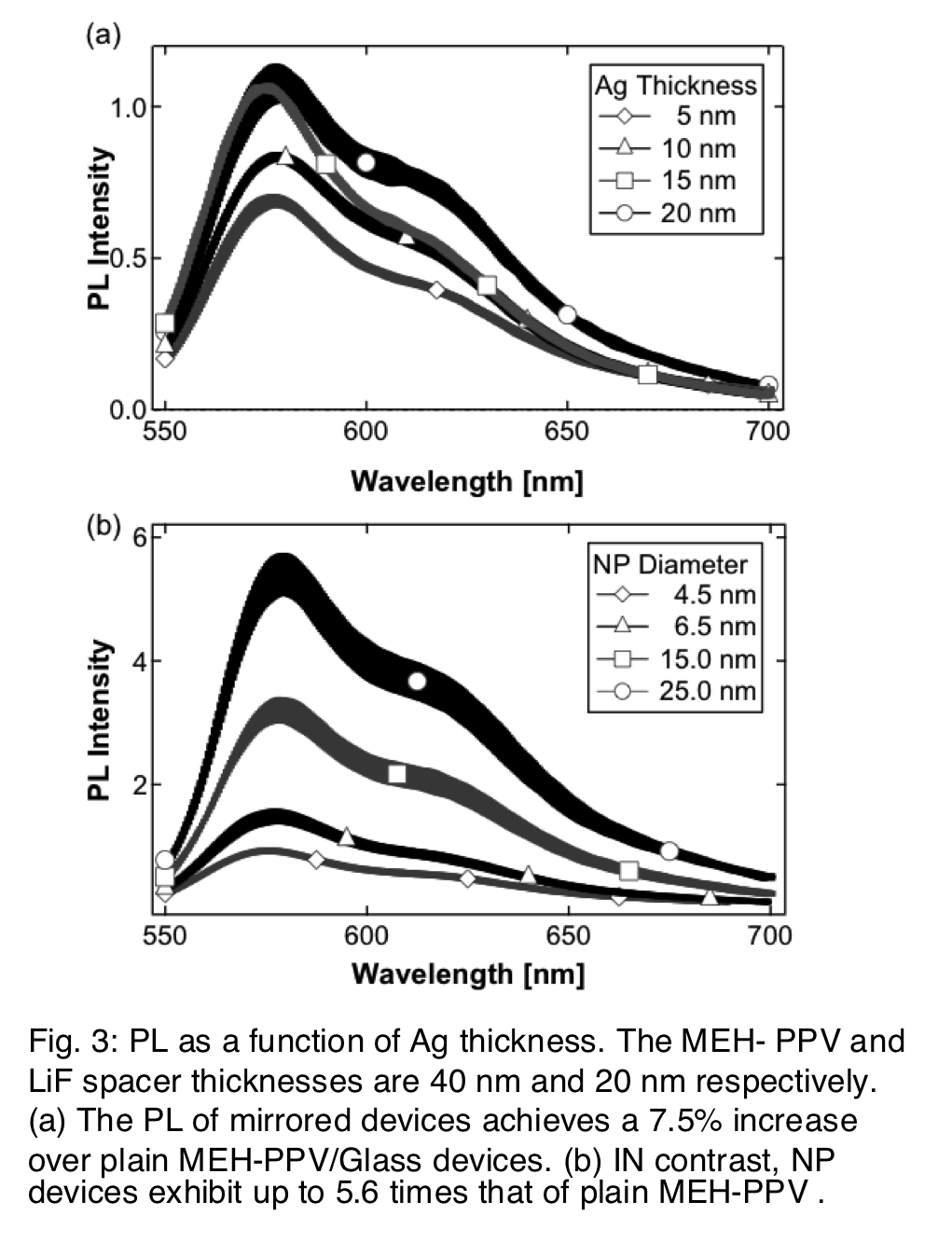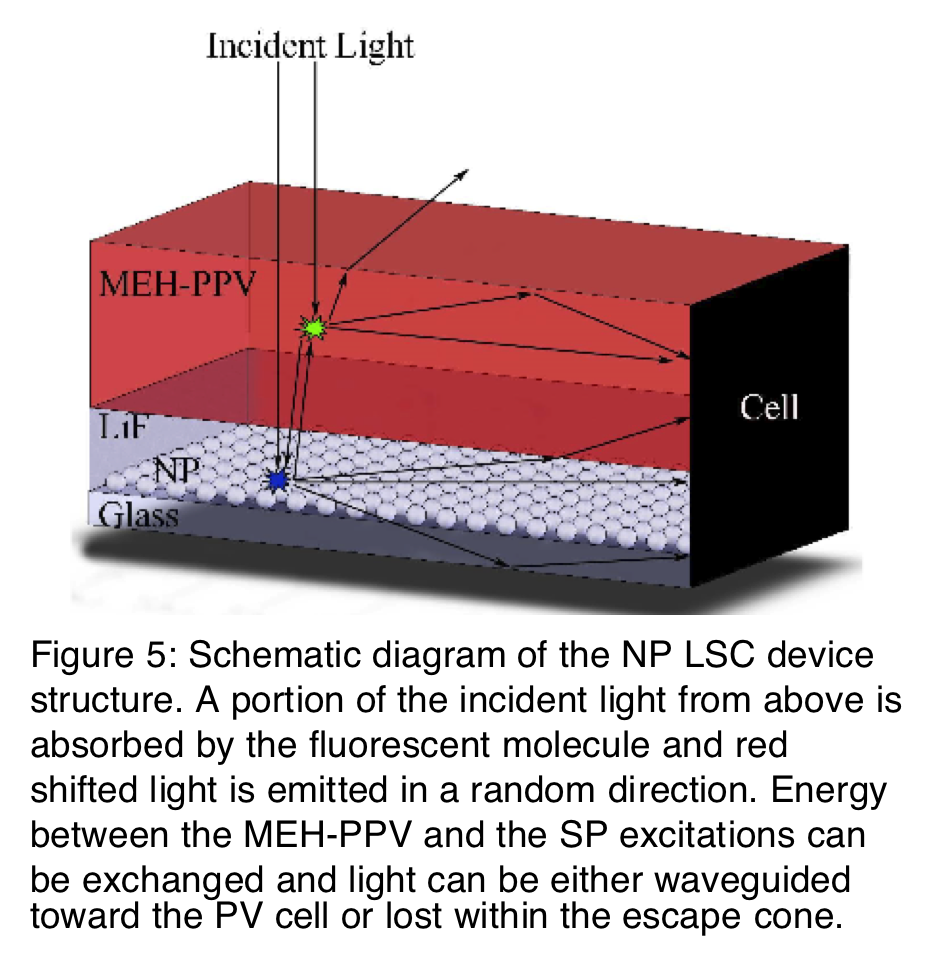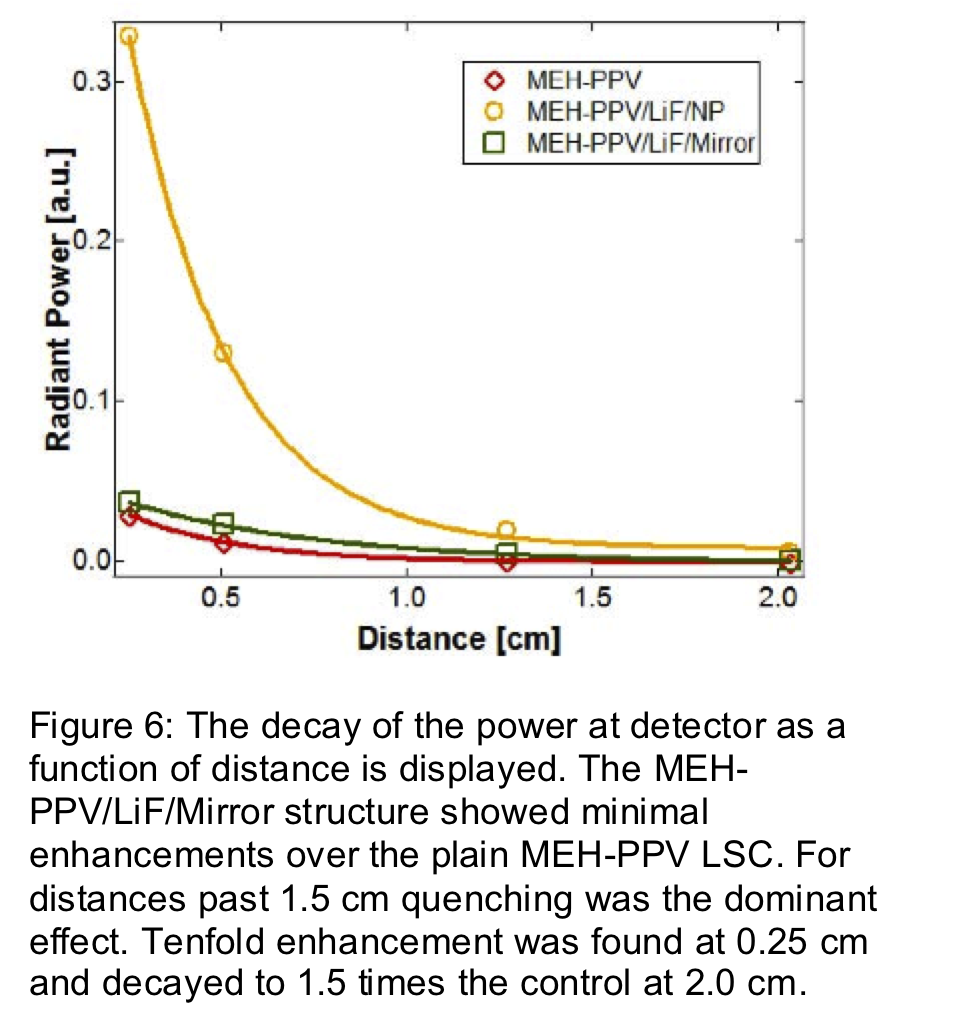Reports: AC10
46326-AC10 Surface Enhanced Fluorescence in Polymer Semiconductors
Figure 1: Film structures studied.
Fig. 2: Thermally deposited Ag film before anneal shows a SP peak for the thinnest deposition of Ag only (dashed line). After anneal (solid lines), SP peaks are well formed for Ag deposition thicknesses up to 25 nm.
We studied the photoluminescence of a conjugated polymer in the presence of surface plasmons on nanoparticles. Three different types of device structures were created, as shown in Figure 1. The Ag deposition thickness ranged from 5 nm to 20 nm, the LiF film thickness was varied from 5 nm to 110 nm, and the thickness of the MEH-PPV was constant at 40 nm. Annealing of the Ag layer resulted in a homogeneous and dense NP layer with SP resonance peaks ranging in energy from the absorption to the emission peaks of MEH-PPV, as shown in Figure 2.
The curves in Figure 3 show that Ag NP films exhibit larger enhancements to photoluminescence (PL) then thin mirrors, with a maximum of 5.6 times the peak PL of device type 1. The smallest enhancements were found for SP resonances overlapping the absorption peak of MEH- PPV at 475 nm. PL emission was observed to increase for larger particles with resonances that have a larger overlap with the emission peak of MEH-PPV. This result is due to a combination of SP effects and an increase in scattering cross section of light off larger particles making up the NP layer. While SP field effects should be spacer thickness dependent, scattering should be relatively constant in the near field regime.
Fig. 3: PL as a function of Ag thickness. The MEH- PPV and LiF spacer thicknesses are 40 nm and 20 nm respectively. (a) The PL of mirrored devices achieves a 7.5% increase over plain MEH-PPV/Glass devices. (b) IN contrast, NP devices exhibit up to 5.6 times that of plain MEH-PPV.
Fig. 4: Distance dependence of MEH-PPV PL to Ag NP layer and mirror. The data are normalized to the peak PL of the control. The data shown here are averaged over four devices with MEH-PPV and Ag deposition thicknesses of 40 nm and 15 nm respectively.
To understand which effect is dominant, we studied how the distance between the MEH-PPV and silver layer affected the enhancement (Figure 4). Quenching is the dominant effect for the mirrored devices; however, large enhancements in the NP devices are observed with a peak around 40 nm distance separation which corresponds well with the calculated penetration depth. Both the distance and the large enhancement suggest that surface enhanced fluorescence and not reflection is the dominant effect. A spectrum of surface plasmon resonances ranging from the emission to the absorption energies of the conjugated polymer revealed largest enhancements when the resonance was tuned to the conjugated polymer emission energy. The maximum photoluminescent enhancement was 5.6 times the photoluminescence of the control structure.
Absorption measurements were taken and show less than a 10% change over the range of LiF thicknesses. This puts a limit on the effect the excitation intensity has, which suggests that the enhancement is also due to an increase in the quantum efficiency. Similar work by Neal et al. explains the increase by introducing a new term (kSP) to the internal quantum efficiency (hint) calculation, given by:
where krad is the radiative recombination rate, knonrad is the nonradiative recombination rate, and kSP is the recombination rate due to the plasmons. We find that for small spacer thicknesses the nonradiative rate dominates the overall efficiency and quenching is observed. For large spacer thicknesses kSP is small and the PL of the control is expected for both NP and mirror devices. As the separation distance is made thinner kSP increases which allows for enhancement.
The peak in PL enhancement around 40 nm LiF thickness is drastically different than the SP enhanced PL in fluorescent dyes such as rhodamine 6G where the separation distance for dyes is approximately 5 nm. This observed contradiction can be understood through the differences in the quenching distance dependence between dyes and polymers. The distance range for significant quenching in dyes extends out to 10 nm where as in polymers the distances range out to 60 nm.
We also report on a proof of concept application of surface plasmons for use in enhancement of photovoltaic light collection in Luminescent Solar
Figure 5: Schematic diagram of the NP LSC device structure. A portion of the incident light from above is absorbed by the fluorescent molecule and red shifted light is emitted in a random direction. Energy between the MEH-PPV and the SP excitations can be exchanged and light can be either waveguided toward the PV cell or lost within the escape cone.
Concentrators, depicted in Figure 5. Silver nanoparticles with 25 nm diameters are used to affect the absorption and emission of the fluorescent molecules for waveguiding of light to the edges of the collector photovoltaic energy harvesting.
Figure 6: The decay of the power at detector as a function of distance is displayed. The MEH- PPV/LiF/Mirror structure showed minimal enhancements over the plain MEH-PPV LSC. For distances past 1.5 cm quenching was the dominant effect. Tenfold enhancement was found at 0.25 cm and decayed to 1.5 times the control at 2.0 cm.
Illuminating the
LSC at varying distances from the edge of the cell, we were able to attain the
power loss as a function of distance (Figure 6). Contributions from an increase
in waveguiding efficiency by light scattering off the nanoparticle layer and
surface plasmon energy transmission facilitated an increase in waveguiding
efficiency up to fivefold at 600 nm wavelength. We found the overall power
transmission was increased by an order of magnitude at 0.25 cm from the edge of
the panel; however, as the light source is moved away from the edge, the
enhancement decreases until at 2.0 cm an enhancement of only 1.5 fold is
observed. These results open up the possibility of using materials with a large
Stoke's shift but lower quantum efficiencies for luminescent solar
concentrators.

